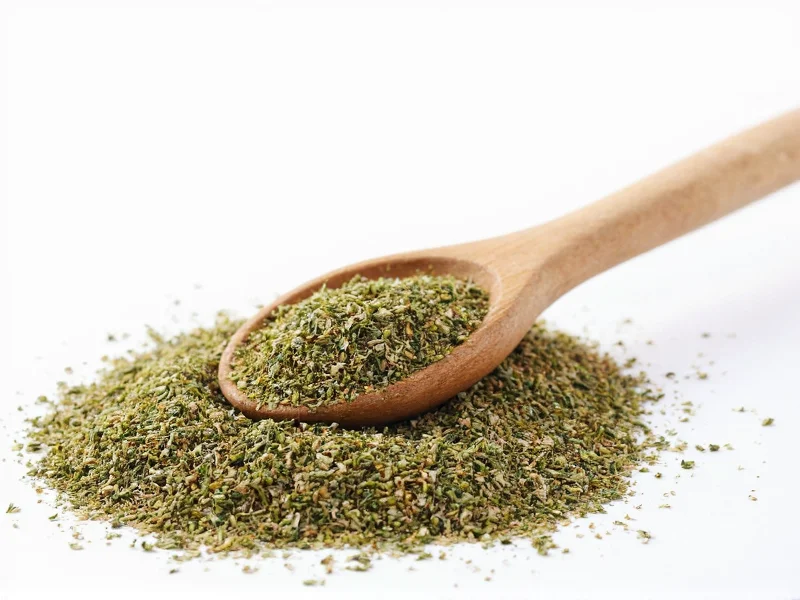Running out of oregano doesn't have to derail your cooking plans. Whether you're preparing Mediterranean cuisine, Italian pasta sauces, or homemade pizza, knowing effective oregano alternatives ensures your dishes maintain their intended flavor profile. This comprehensive guide details the most reliable substitutes based on flavor chemistry, culinary applications, and availability.
Top Oregano Substitutes Ranked by Flavor Compatibility
Marjoram: The Closest Flavor Match
Marjoram offers the most similar flavor profile to oregano with a sweeter, milder taste. This herb works exceptionally well in tomato-based sauces, roasted vegetables, and grilled meats. When substituting, use equal parts marjoram for oregano, though you may want to increase by 25% for stronger flavor impact. Fresh marjoram makes an excellent garnish for dishes where you'd typically sprinkle fresh oregano.
Thyme: The Earthy Alternative
Thyme provides earthy, slightly minty notes that work well in place of oregano, particularly in meat dishes and stews. When seeking an oregano substitute for pizza or pasta sauce, use 1 teaspoon of dried thyme for every 1½ teaspoons of dried oregano. Fresh thyme requires a 3:1 substitution ratio due to its more delicate flavor. This herb shines in Greek salads, roasted chicken, and bean dishes where oregano would normally feature.
Basil: The Italian Kitchen Essential
Fresh basil makes an excellent oregano replacement in Italian cuisine, particularly in tomato sauces and pizza toppings. While dried basil works in a pinch, fresh basil delivers superior results when substituting for fresh oregano. Use a 2:1 ratio of fresh basil to fresh oregano to account for basil's sweeter profile. For pesto-based dishes originally calling for oregano, basil becomes the ideal substitute without requiring ratio adjustments.
Italian Seasoning: The Convenient Blend
Most commercial Italian seasoning blends contain oregano along with other complementary herbs like basil, rosemary, and thyme. When using Italian seasoning as an oregano substitute, reduce the amount by 25% since the blend contains multiple herbs. This ready-made alternative works particularly well for quick weeknight meals when you need an immediate oregano replacement for spaghetti sauce or garlic bread.
Comparing Oregano Substitutes: Flavor Profiles and Best Uses
| Substitute | Flavor Profile | Best For | Substitution Ratio (Dried) | Substitution Ratio (Fresh) |
|---|---|---|---|---|
| Marjoram | Sweeter, milder oregano | Tomato sauces, roasted vegetables | 1:1 | 1:1 |
| Thyme | Earthy, slightly minty | Meat dishes, stews, Greek salads | 1 tsp : 1½ tsp oregano | 3 tsp : 1 tsp oregano |
| Basil | Sweet, slightly peppery | Italian sauces, pizza, caprese dishes | 1:1 (dried) | 2:1 (fresh) |
| Italian Seasoning | Complex herbal blend | Quick sauces, marinades, breads | ¾ : 1 | Not recommended |
| Rosemary | Pine-like, strong | Lamb, roasted potatoes, focaccia | ½ : 1 | 1½ : 1 |
Specialized Substitution Guidance
Fresh vs. Dried Herb Substitutions
Understanding the difference between fresh and dried herb potency is crucial when finding alternatives to oregano. Dried herbs typically have three times the concentration of fresh herbs. When substituting dried herbs for fresh oregano, use one-third the amount. For fresh alternatives to dried oregano, triple the quantity. This rule applies whether you're using marjoram as an oregano substitute or exploring other herb options.
Recipe-Specific Substitution Advice
Certain dishes require tailored substitution approaches. For pizza recipes originally calling for oregano, a combination of equal parts basil and thyme often delivers superior results than a single substitute. When making Greek salad dressing, lemon thyme makes an excellent oregano replacement, providing both the herbal notes and subtle citrus undertones characteristic of Mediterranean cuisine.
For tomato-based pasta sauces, a blend of marjoram and a pinch of red pepper flakes recreates oregano's distinctive flavor profile. When preparing roasted vegetables, rosemary works as an effective oregano alternative but requires careful measurement to avoid overpowering the dish.
Avoiding Common Substitution Mistakes
Many home cooks make critical errors when seeking oregano replacements. Never substitute strongly flavored herbs like sage or rosemary in equal amounts to oregano—they require significant quantity reductions. Avoid using dried herbs as substitutes for fresh oregano in cold dishes like salads, as dried herbs won't properly hydrate. When substituting in slow-cooked dishes, add delicate herbs like basil during the final 15 minutes to preserve their flavor.
Creating Your Own Custom Oregano Substitute Blend
For those frequently needing oregano alternatives, creating a custom blend ensures consistent results. Combine two parts marjoram, one part thyme, and a pinch of crushed red pepper for a versatile oregano replacement. Store this blend in an airtight container away from light for up to six months. This homemade alternative works particularly well as a substitute for dried oregano in pizza seasoning mixes and tomato sauces.











 浙公网安备
33010002000092号
浙公网安备
33010002000092号 浙B2-20120091-4
浙B2-20120091-4